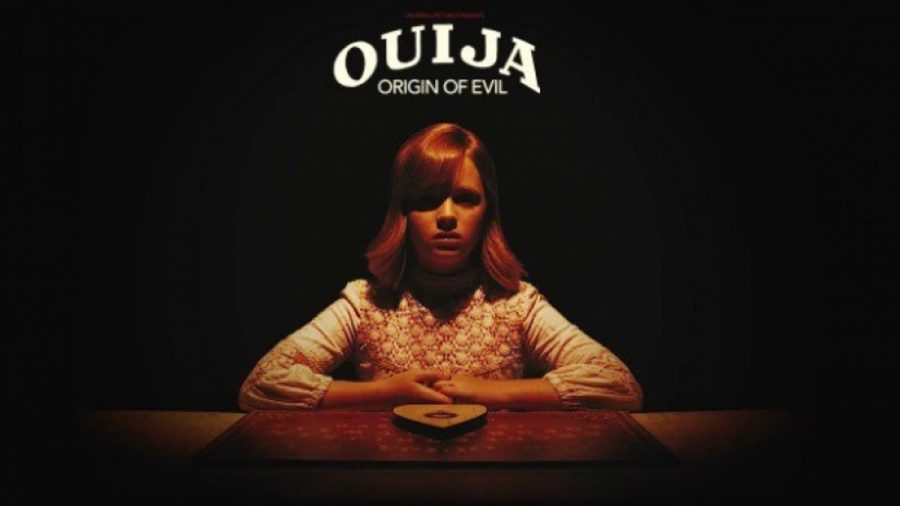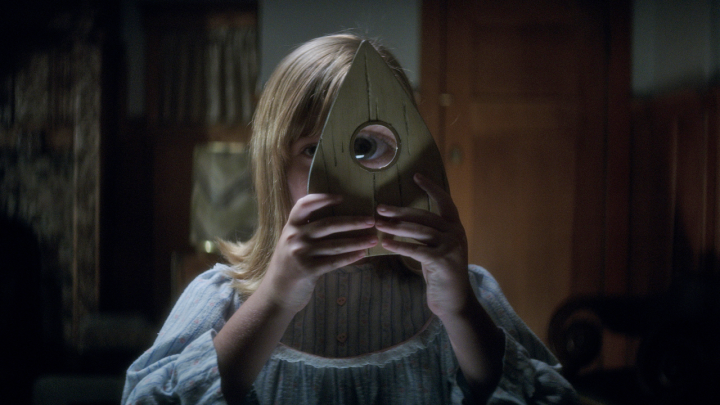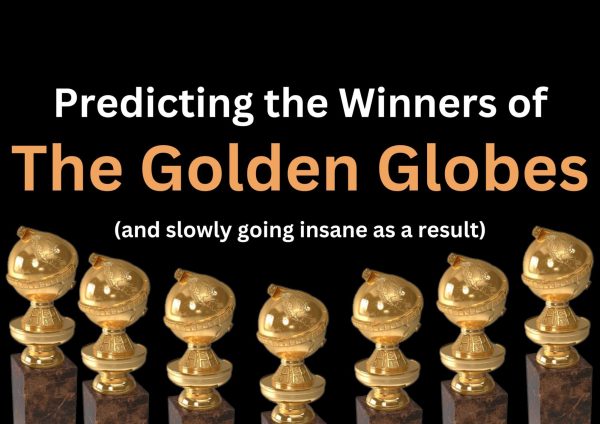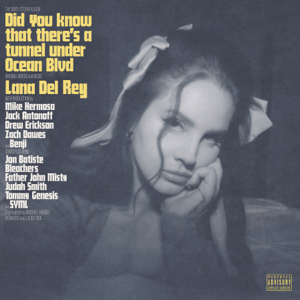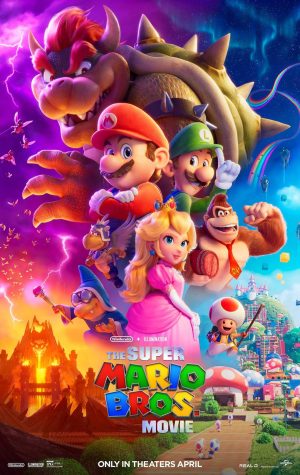“Oujia: Origin of Evil”: A Movie Review
The film’s official cinematic poster.
There are only a few nights of fright separating us from the night of ghouls that is Halloween. A trip to see a horror film around this time of year is a tradition for many Americans. For these thrill-seekers, one option in the theatres right now is “Ouija: Origin of Evil.”
The movie is a prequel to 2014’s “Ouija.” It takes places about 50 years before the original, in 1967 Los Angeles, and follows recently-widowed mother Alice Zander and her two daughters, teen Paulina and nine-year-old Doris, as they struggle to maintain their house and scam seance business afloat.
Alice is played by “Twilight’s” Elizabeth Reaser, while Paulina is played by TV actress Annalise Basso and Doris is played TV child actress Lulu Wilson.
One day Alice decides to add the board game “Ouija” as a stunt to bolster her business, not realizing she will invite a merciless spirit into her family’s home, and into her youngest daughter, as well.
This movie was a breath of fresh air in the sense that it didn’t follow the norms of a typical horror movie. The film had many instances where you could notice it was diverging from the typical horror tropes to do its own thing.
A plus for the film is that it actually invests you, the viewer, in its characters. In many horror flicks, characters are portrayed as ill-advised, carefree and one-dimensional. Just think of the many cliches you see in horror films, such as the blonde girl and the typical jock.
“Ouija: Origin of Evil” actually takes the time to set up and introduce its characters to give the audience a sense of why they behave as they do in each particular scene.
Now, many of the substantial features can be credited to the film’s director, “Before I Wake’s Mike Flanagan, as his filming style is one that goes against mainstream horror films.
In most of his films, Flanagan goes for a retro feel– and for this film– it was no different. Flanagan focused on letting his audience know the movie takes place in the sixties, not only through the costumes, settings and characters, but also in the way the film it’s shot and edited.
One example of this is at the beginning of the film, where instead of getting the usual opening Universal Studios title card, you get the old-timey one from the sixties.
As the movie rolls on, you may notice black dots in the upper right corner of the film every 20 minutes or so. These dots are actually called “cue marks” and were used in the sixties to inform the projectionist that the movie was about to switch scenes, meaning that the tape rolls would need to be replaced for the movie to continue.
Many film lovers said they appreciated these small gestures, as they saw them as both a throwback to old Hollywood and as a nod to today’s films.
“I think these occasional visual tricks were very well done as both a tongue-in-cheek nod to classic Hollywood and modern horror,” said freshman Jackson Wess.
In the end, Flannagan wanted his audience to not only feel as if they were watching a movie from the sixties, but also feel as if they were in the sixties themselves.
The biggest one being that the movie focused way too heavily on the family dynamic for the first 40 minutes, which made it feel like this was driving force behind the film until they got the Ouija board.
For instance, 11 of those 40 minutes are used to focus on Alice trying to scare off Paulina’s boyfriend, Mikey.
The movie should have found a way to balance both the family dynamic and the horror equally throughout the film, rather than separate them into different parts so that one aspect receives more attention than the other.
Now, the ending of the movie was somewhat disappointing, as it was weak and predictable.
In reality, the movie had many places at which it could have ended and left the audience with that sense of uneasiness that horror-movie watchers expect from a good ending.
Instead of doing this, the movie does the opposite and gives the audience a sense of wanting more.
Nevertheless, the ending thankfully does not ruin the whole vibe of the film, as you still feel satisfied with the movie you just watched.
In the end, “Ouija: Origin of Evil” is a unique horror movie that’s able to stand apart from its predecessor– even with a few noticeable flaws that may make it seems that the movie is dragging along– as it’s able to cater to all types of audiences, from casual moviegoers just looking for a good time, to die-hard horror fans hoping for shivers up their spines.

“Ouija: Origin of Evil” is rated PG-13 and out in theaters now.

Jimenez is a senior and a fourth-year reporter. He served as the Editor-in-Chief for The Bear Witness for the first semester. Jimenez previously served...
